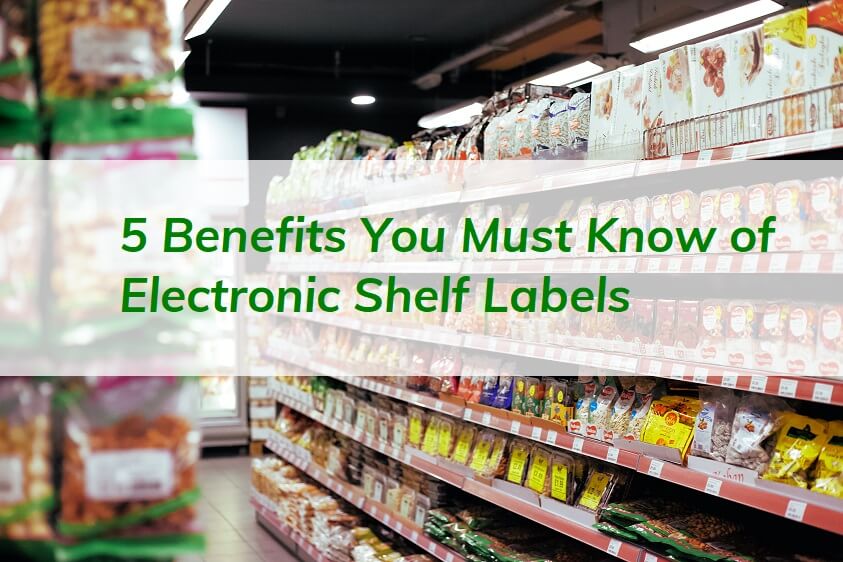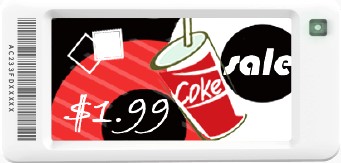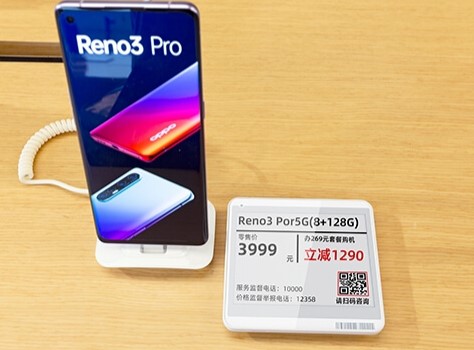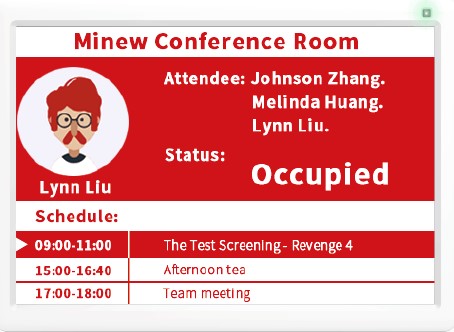Electronic shelf labels have brought many benefits to retail, office, healthcare, etc. Today, we'll talk about 5 main benefits you must know of Electronic Shelf Labels (ESLs).

What Are Electronic Shelf Labels?
Electronic shelf labels are digital wireless display systems used by retail stores to display product prices. If you apply ESLs to your stores, they will be directly connected to your store's ERP and POS machines to reduce the labor cost of price management, improve pricing accuracy, and support dynamic pricing.

Applications
Over the years, automation has been accepted by the retail industry and proved to be beneficial to retailers, which has led to the adoption of electronic shelf labels in many retail stores (such as appliance stores, convenience stores, department stores, and supermarkets). The use of digital shelf labels enables stores to implement dynamic pricing solutions, eliminating manual operations, thereby reducing labor.

Benefits
The electronic label uses electronic ink to display the price and is connected to a computer database. With this labeling technology, changing the in-store price becomes as simple as entering a new price in the software and clicking "send".
These electronic tags have many benefits to retailers, the biggest of which is carrying out real-time dynamic pricing in the store and building an all-around experience to improve customer loyalty. Similarly, other industries favor electronic tags because they help improve efficiency.
How they can help grow your business?
1. Display more products’ information
With the advancement of ESL technology, more diverse information can be shown on an e-label, which allows you to show more information than just the product's price.
If applied in retail stores, you can display information as follow:
More product details
Nutrient content
Remnant stock (let customers know if the supply is limited)
Price per weight
Size
Place of origin
Online prices of the competition
Reviews of products
more
The retailer can add this information to the main label or print a QR to obtain additional information through the store's app or website. In this way, QR code marketing can also help promote or sell.

2. Save paper and plastic
Every time you change the price, you need to print a label or replace an old label, which is wasteful. This is especially true for retailers who sell hundreds of different products. What's more, paper and plastic products are expensive and easy to break, thus adding more waste, and this is the resource that needs to be reduced in today's environment.
Electronic tags mean that you only need to buy the tags ONCE. There is no need to discard old labels and replace them with new ones so that a one-time purchase is enough to last forever. And the electronic label is almost not damaged; no matter how many years have passed, as long as the interface is refreshed, it will look completely new.
In addition, there are many participants in conference scenarios and significant conferences, and many paper labels are needed as name badges. Once the list of participants is changed, label printing and replacement are highly error-prone. If you use an electronic label at this time, you only need a few clicks on the software to change the information displayed on the label. And after the meeting, all the tags can be reserved for the next meeting.

3. More accurate and save employees' time
Electronic pricing is easier to operate, more accurate, and allows remote operation. Employees do not need to waste time replacing thousands of labels in meaningless and tedious work. Such trivial and troublesome work will inevitably lead to pricing errors. Many retailers will also provide products at listed prices rather than actual prices, so a tiny mistake at this time will eventually lead to a significant loss.
Electronic tags can be changed in batches from the back-end. Moreover, if there is an error, it can be corrected quickly without manual modification, which avoids repeated errors. Your employees can also spend their time helping customers instead of labeling.
4. ESLs can help prevent showrooming
Electronic shelf labels can help your store prevent showrooming, which may be the most surprising and innovative aspect.
With the changes in consumption patterns, it is ubiquitous for consumers to go shopping first, compare prices in physical stores and online shops, and then purchase. This is also one of the most critical impacts online stores have on offline stores.
It can be said that "showrooming" is a phenomenon faced by many brick-and-mortar retailers. Consumers browse goods in physical stores but buy online because online prices are often cheaper.
ESL allows retailers to make more dynamic pricing. You can easily adapt the prices, so you can always follow the online prices and then quickly make any adjustments in your store.
This is a new technology, and currently, only the most prominent retailers are adopting it. Some people worry that this might also drive away customers. But this is an exciting possibility of some of the capabilities that ESL may provide in the future.
5. The payback of ESLs is quick
How much do electronic shelf labels cost? The initial investment is required. If you are unsure whether you will use them, you might indeed be skeptical of their input-output ratio.
The installation of electronic tags is cost-effective. Take MinewTag's ESL solution for example:
Our labels are easy to install with a simple screwdriver. They are also easy to configure using the ESL Cloud Platform.
After installation, employees no longer need to monitor price tags every day and are busy with meaningless tasks such as changing tags. A one-stop solution requires only one person to control price changes in the whole store easily or even elsewhere.
According to a report about the payback of ESLs from DisplayData, in-store sales usually increase by 6%, and profit margins usually increase by 2%-3%.
If you want to know more about ESL solution, contact us as info@minewtag.com for a free quote.











